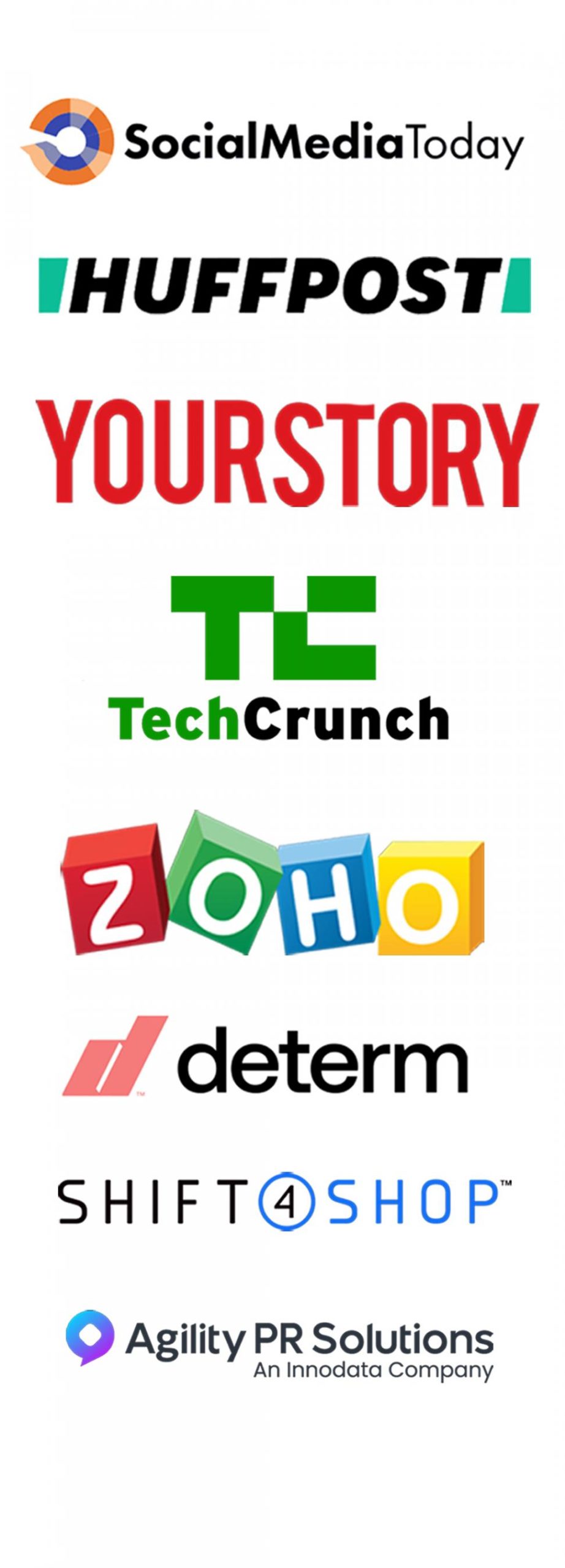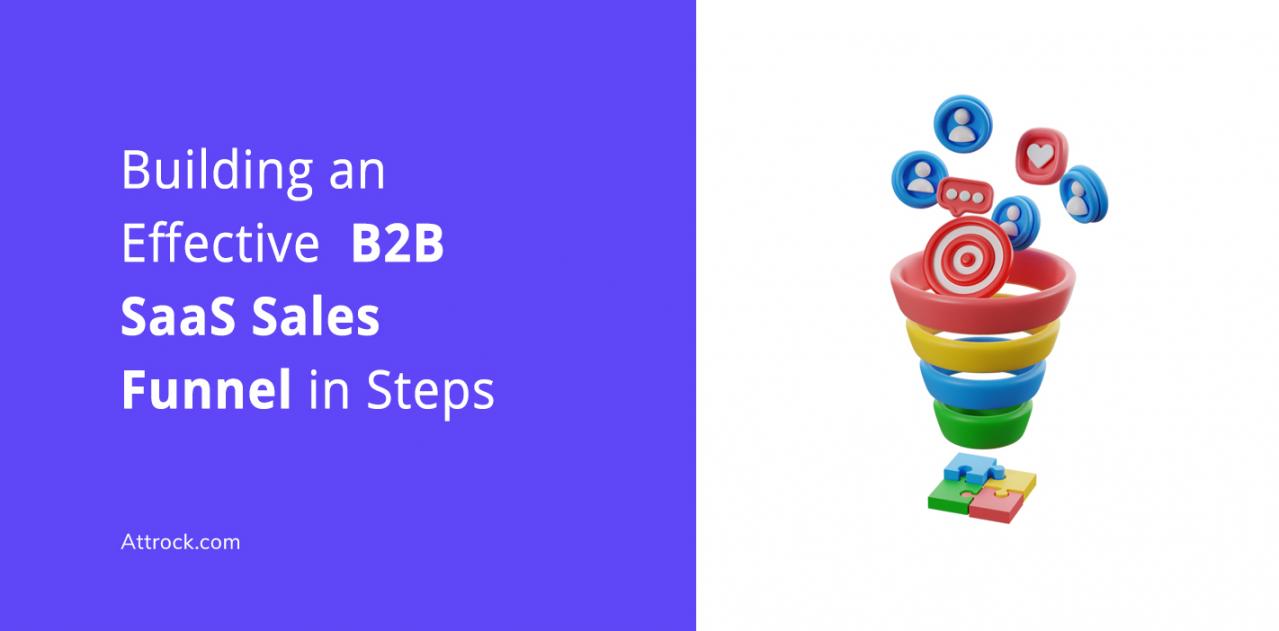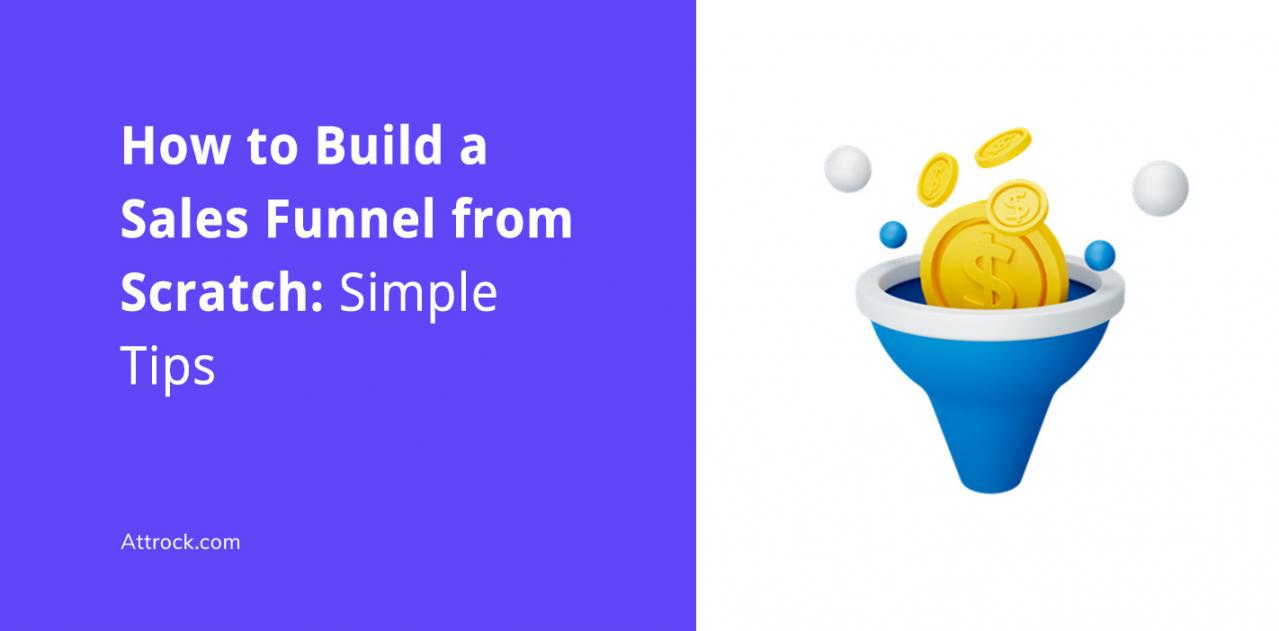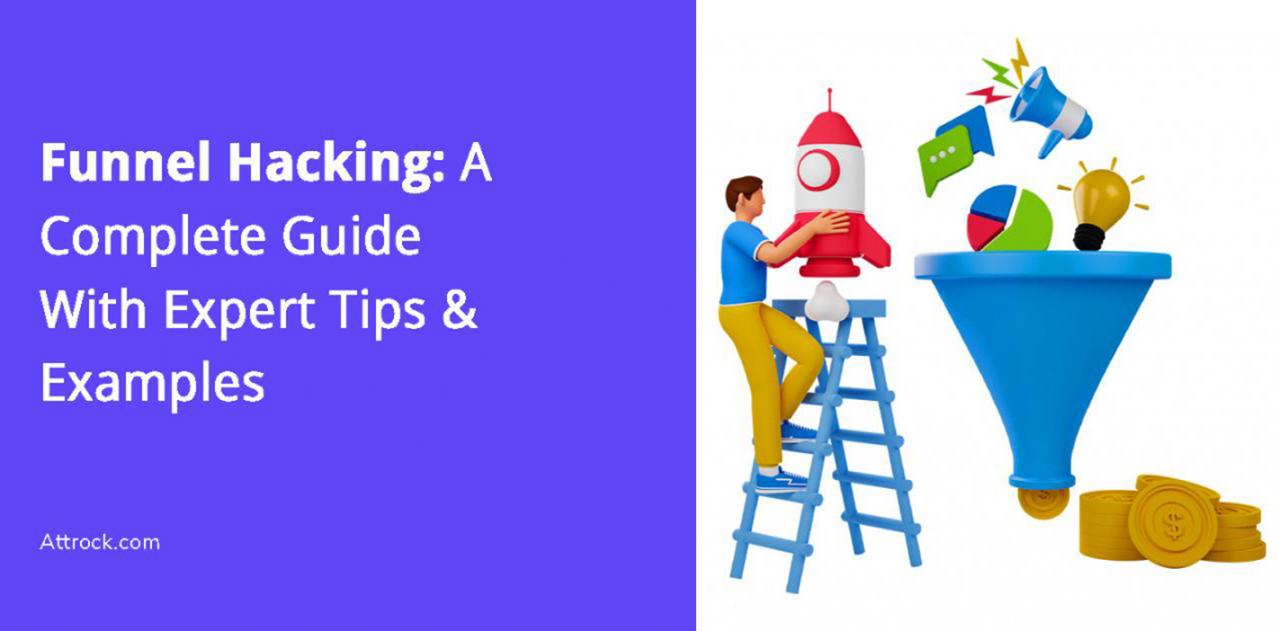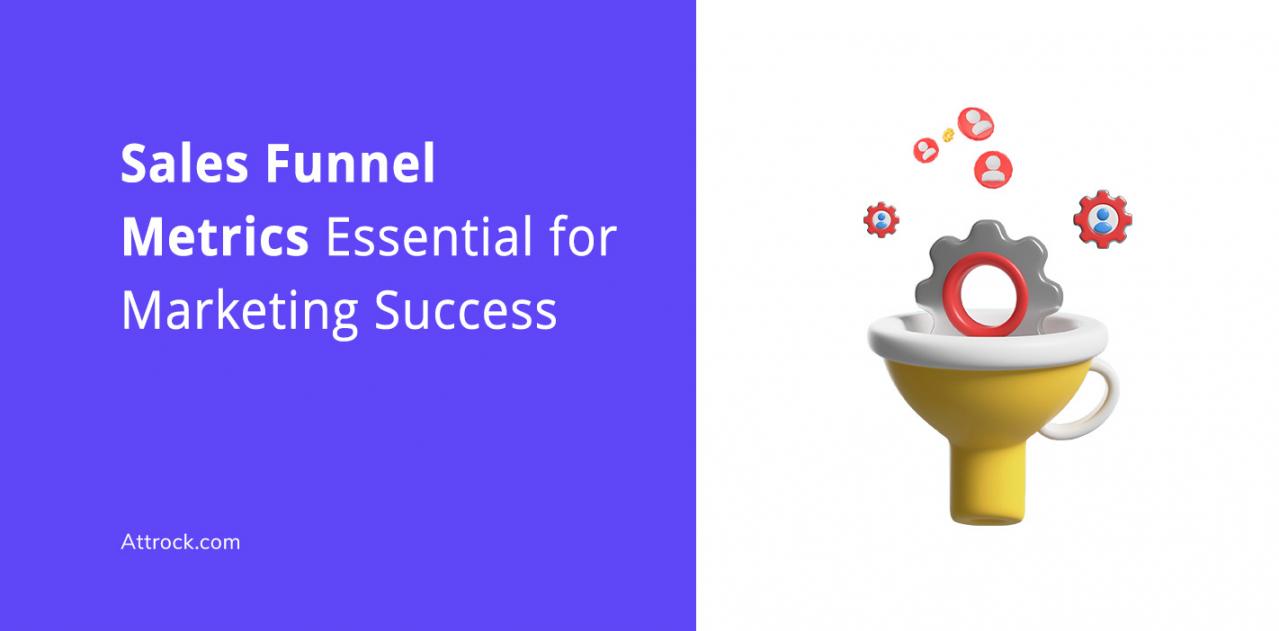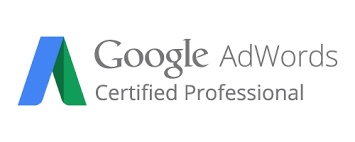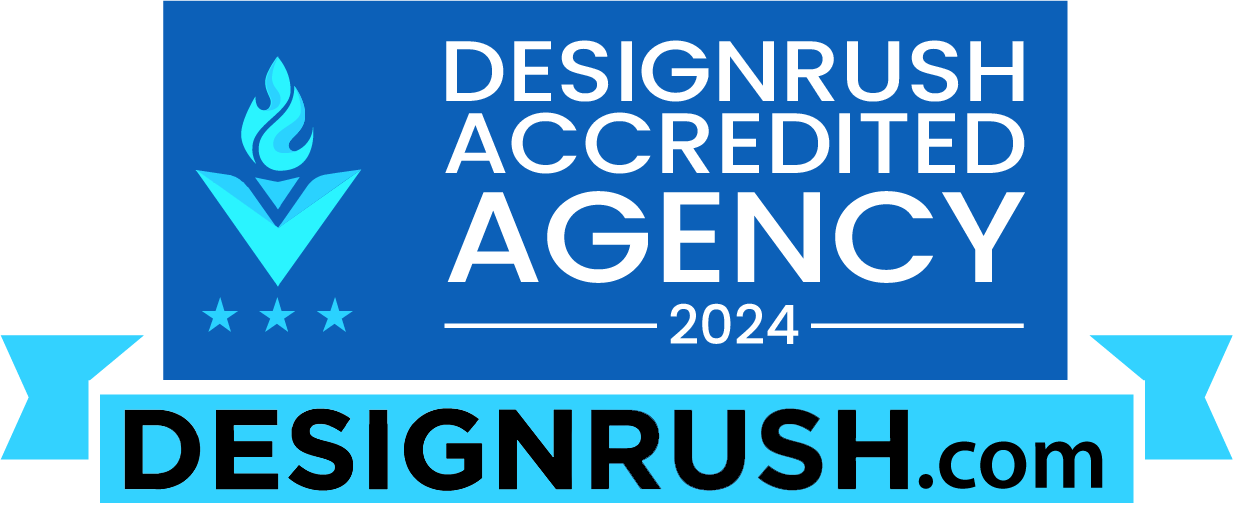Wondering how to build a marketing funnel?
You’ve come to the right place.
A marketing funnel is a tool marketers use to increase your number of leads by sending more qualified prospects your way.
There are different steps in this process, which include capturing leads, nurturing them with high-quality content, showing value, and persuading them to buy.
If you're not sure where to start, our step-by-step guide on how to build a marketing funnel will walk you through the process from beginning to end.
Let’s get started.
Table of Contents
What is a Marketing Funnel?
A marketing funnel is a tool that businesses use to map out the customer journey from awareness to purchase, and beyond. The funnel is made up of various stages, each of which represents a different step in the journey.
To master how to build a marketing funnel, you need to understand these stages and their significance. They typically include the following:
- Awareness
- Interest
- Consideration
- Decision or Action
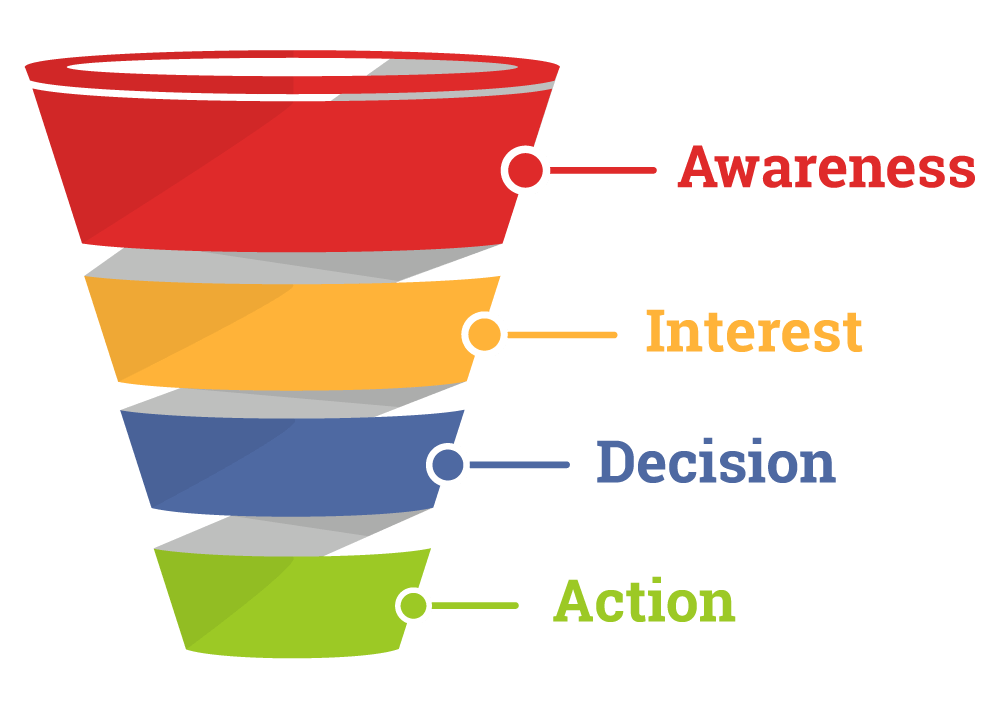
Image via Hello Digital Marketing
Understanding the Stages of the Marketing Funnel
Let’s now try to understand each stage of the funnel shown above.
Awareness
Awareness is the stage where prospective customers are first exposed to your brand or product. This can happen through paid advertising, organic search results, social media, or word-of-mouth.
From there, they progress to the interest stage, where they learn more about your products or services and start to develop a preference for your brand.
Understanding how to build a marketing funnel effectively can help nurture these leads through this stage.
Interest
Interest is the stage where leads become interested in what you have to offer. They may learn more about your product or brand, and start to compare it to other options.
Understanding how to build a marketing funnel is crucial at this stage, as it directs leads to engage more with the brand. This can happen when they visit the company’s website, read more reviews, or do some research.
Consideration (or Desire)
Consideration is the stage where potential customers weigh their options and decide whether or not to buy your product or use your service.
They may do additional research at this stage, looking at reviews and testimonials to help them make their decision.
Action
Purchase is the final stage of the marketing funnel, where potential customers become paying customers. Even after a purchase, it’s crucial to know how to build a marketing funnel that nurtures the customers through the post-purchase stage.
This has the added benefit of turning the customers into repeat buyers or even brand ambassadors. In short, understanding how to build a marketing funnel doesn’t stop once the sale is made. You have to maintain the connection.
Before proceeding further, it’s important to know the difference between a sales funnel and a marketing funnel. While a sales funnel focuses on boosting sales and conversions, marketing funnels are focused on generating interest and brand loyalty.
Let’s understand this better with some examples.
Why Should You Know How to Build a Marketing Funnel?
For every business, generating qualified leads and converting them into customers is the top priority. However, the process is neither easy nor cheap. Even when businesses do acquire leads, most of them don’t convert to sales.
Marketers consider lead generation, conversion, and demonstrating the ROI of their marketing activities as their top challenges.
The lead-to-sales conversion statistics in this table prove the point. As you can see, the conversion rates are between 3.3 to 5.6% for most industries.
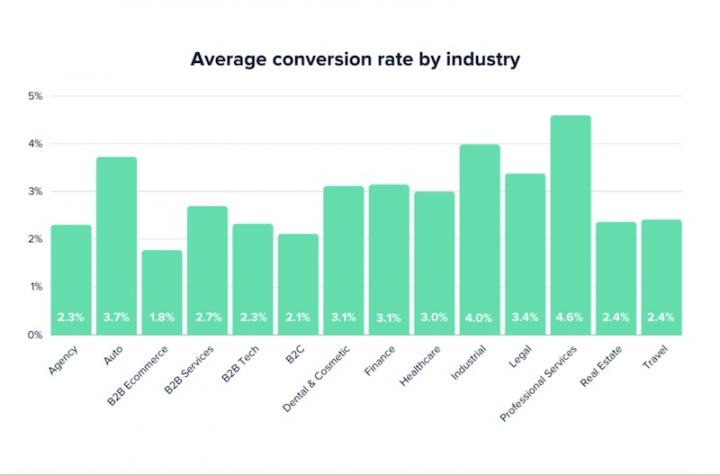
Image via Ruler Analytics
And, what are the reasons behind poor conversion rates?
- Leads are not qualified
- They are not yet ready to buy
- There is no long-term lead nurturing strategy in place
- There is a lack of consistent and timely follow-up with sales leads
- Lack of knowledge on which type of content and tactics to use at different stages of the buyer’s journey
- Lack of visibility of the customer journey
It is important for every marketer to know how to build a marketing funnel using ClickFunnels alternatives because it helps businesses:
- Get full visibility into their customers’ journey and pain points
- Create tailored marketing and content strategies for each stage with greater precision
- Become more relevant to their target audiences
- Develop an accurate picture of the effectiveness of their marketing strategies
- Generate more conversions, value, and ROI
Convinced about the importance of knowing how to build a marketing funnel?
Let’s now talk about the different stages of a marketing funnel before getting to learn how to build one.
Steps to Build a Marketing Funnel
Now that you are ready to learn how to build a marketing funnel for your content, there are a few steps you can take to make sure it's successful.
1. Determine Your Goals
Why set goals before knowing how to build a marketing funnel?
Well, setting goals helps you create a strategy and establish processes that set you up for success. With clear goals outlined, you’ll know exactly what needs to be done to reach them.
Don’t believe us?
According to CoSchedule’s research, marketers who set clear goals are 376% more successful than those who don’t.
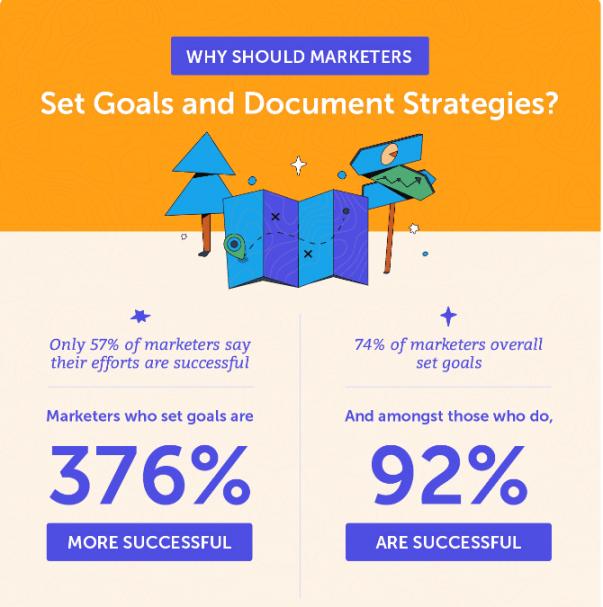
Image via CoSchedule
The goals for building a marketing funnel can seem obvious: improving conversions and sales.
Your marketing funnel objectives need not be restricted to just getting your leads to purchase.
You can use marketing funnels, for instance, to see how your website visitors move through the site. These insights can guide you on how to build a marketing funnel that better engages users, ultimately helping you drive more sales in the future.
Other goals for building a marketing funnel can be:
- Tracking the signup for your newsletter (seeing the signup form > filling and submitting form > providing emails)
- Page conversion (Visiting the signup page > completing the sign up).
- Ebook or app download (Visiting the download page > filling the signup form > downloading the app or ebook)
Take some time to think about what your goals are before building your marketing funnel.
2. Create Buyer Personas
Knowing how to build a marketing funnel begins with identifying your target audience and understanding what they expect from you. This is the key to ensuring your sales and marketing efforts are aligned with your prospects’ preferences and pique their interest.
This is the best approach when mastering how to build a marketing funnel because it allows you to make the most effective use of your time, money, and resources.
Creating a buyer persona requires research and input from various stakeholders within your organization. You can do this by conducting market research or using a survey to find out:
- What are your target customers’ goals
- What problems they have
- What solutions you can provide for them
- What type of content they consume
- Which is their go-to source for news, entertainment, and networking?
- Who influences them?
- How often do they buy from you or your competitors?
Once you know who your ideal customers are, you need to segment them.
It’s important to remember that not everyone who completes the first 1 or 2 stages will automatically convert into paying customers. This is where the term “marketing qualified lead” or MQL comes in.
Understanding how to build a marketing funnel means recognizing these leads. You need to identify people more likely to convert into customers than others.
This determination is typically made based on indicators such as the lead's behavior (e.g. engagement with marketing content) or their profile (e.g. job title or industry).
Marketing qualified leads are important because they represent a higher quality of lead than non-MQLs. Knowing how to build a marketing funnel allows you to use automated lead qualification tools to spot these high-potential leads.
The purpose of identifying buyer personas is to gain a deeper understanding of each persona’s journey and how they progress through your funnel to ultimately become customers. This insight allows you to create more targeted marketing funnels that address the specific needs and behaviors of your audience.
3. Use the Right Marketing Campaigns at Each Stage
Several marketing tactics can be used at each stage of the marketing funnel to move a customer through to a purchase.
Let’s see the strategies you can use for each stage.
Top Of The Funnel (TOFU)
A crucial aspect of learning how to build a marketing funnel is brand awareness. Use strategic marketing campaigns to increase brand awareness by showcasing what your brand has to offer.
Instead of a hard sell, you should focus on relationship-building and providing information that is relevant to your audience and relationship-building.
The idea is to create opportunities for your target audience to get to know what your brand is all about, your values, and your offerings.
Here are some top-of-the-funnel marketing tactics that can help you know how to build a marketing funnel and reach a large number of people.
Social Media Outreach
There are many ways to use social media to create awareness and connect with prospects organically, including:
- Hosting contests
- Offering freebies
- Showing a demo of the product or service
- Creating shareable content
- Leveraging user-generated content
- Telling your brand story
- Contributing to a cause
- Posting infographics
Here is a social media post from Harley-Davidson which showcases the stories of their riders in addition to information about their new models:
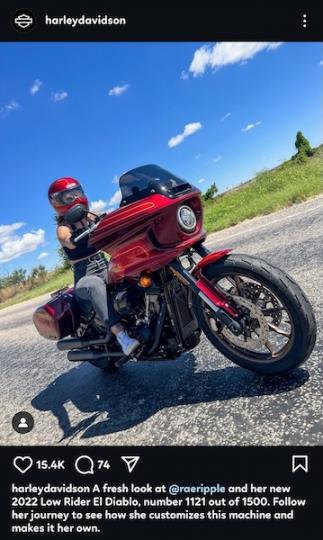
Image via Instagram
And here’s how Blendjet uses contests to promote awareness:
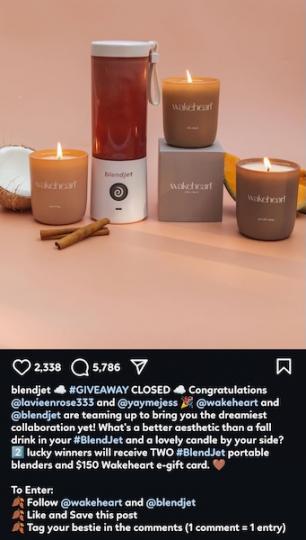
Image via Instagram
You can also incorporate your offline activities in the digital marketing funnel to create brand awareness. These offline activities can include sponsorship of events, charity work, or making corporate donations.
Take a look at how Honda uses social media to showcase the musical fireworks event called the “Celebration of Light” that it sponsors each year.

Image via Instagram
Blogs
Blogs are yet another great way to create brand awareness for your business. By learning how to build a marketing funnel with valuable blog content, you can attract new readers to your website and improve your SEO.
To use your blog as a marketing tool,
- Start by defining your target audience and what you want to achieve with your blog.
- Structure your blog post with headings, sub-headings, and bullet points.
- Do keyword research and include the relevant keywords to boost search rankings.
- Ensure the blog post’s length is aligned with search engine optimization best practices. According to HubSpot’s research, the best-performing blogs have between 1000 and 2500 words.
- Create content that is visually appealing and easy to read, and include calls to action (CTAs) throughout your posts so readers know what they should do next.
- Promote your blog on social media and other channels to get more eyes on your content.
By following these tips, you can use your blog as an effective marketing tool to create a marketing funnel that brings brand awareness and drives traffic to your website.
Optimize Your Website
Another useful strategy for building a marketing funnel is to optimize your website content for the right keywords to improve your organic search rankings.
Here are some tips for optimizing your website and landing pages for SEO:
- Use keyword-rich titles and descriptions. Make sure your titles and descriptions include the keywords you want to rank for.
- Structure your URLs. Use keyword-rich URL structures that are easy for both users and search engines to understand.
- Optimize your images. Use image compression tools to help pages load faster and include keywords in your image file names and alt text.
Paid Ads
PPC ad campaigns are effective TOFU marketing strategies that help you to create brand awareness. Understanding how to build a marketing funnel with PPC helps you target your audience more effectively with ads.
These ads help introduce your brand to a wider audience, setting the stage for deeper engagement as they move through your marketing funnel.
For instance, Facebook’s brand awareness ad campaigns allow you to reach the maximum number of people within your defined budget.
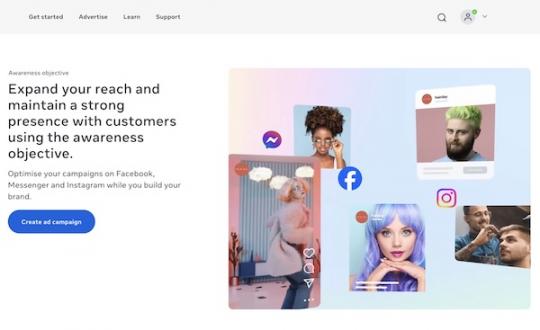
Image via Facebook
Influencer Marketing
Influencer marketing can be a fantastic way to boost brand awareness. It’s especially effective for people who already know how to build a marketing funnel they can leverage for a bigger reach.
One of the most important aspects of influencer marketing is finding the right influencers to work with. You want to partner with influencers who not only have a large following but are also relevant to your industry and target audience.
Once you've found the right influencers, you need to build a relationship with them and establish trust before you start promoting your products or services through their channels.
By understanding how to build a marketing funnel with influencer partnerships, you can create authentic and effective campaigns that drive long-term brand growth.
Here’s an example of how Capital One, a credit card company, has partnered with influencer Skyler Bouchard Oppenheim who has over 250K followers on Instagram.
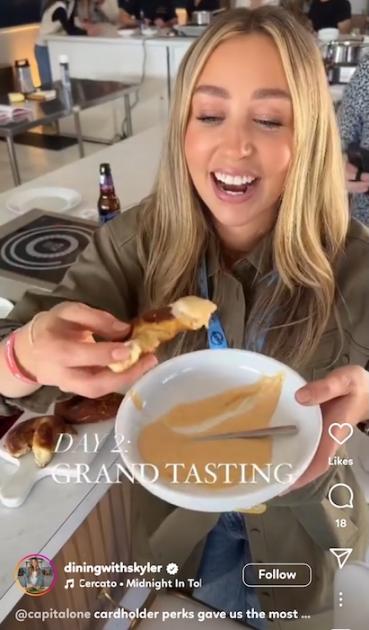
Image via Instagram
It doesn’t have to be a mega influencer if you are low on budget. Many brands, like Sony, successfully use nano influencers with 1000 or less followers.
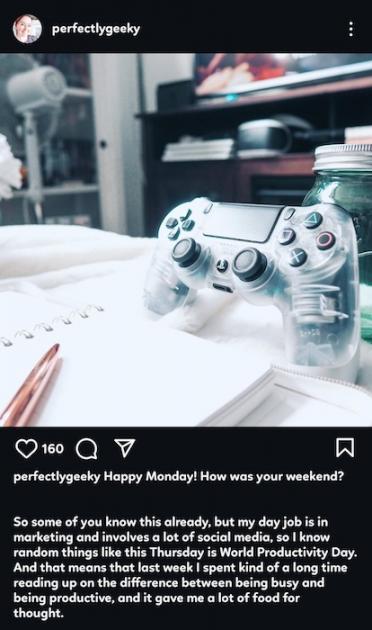
Image via Instagram
Middle Of The Funnel (MOFU)
This is the stage where knowing how to build a marketing funnel means taking the awareness you’ve already created and turning it into genuine interest. Essentially, you need to convert your audience into leads.
Marketing campaigns that work well at this stage involve providing more information about your product or service and explaining how it can help solve the customer’s problem.
Content Marketing
Good marketers know how important it is to understand how to build a marketing funnel with content that educates and guides potential customers.
Most marketers say “how-to” guides generate the best leads, making them ideal for both TOFU and BOFU. This is followed by product-oriented content, case studies, and web page content.
To nurture the leads already acquired at the TOFU stage, marketers mostly use email marketing.
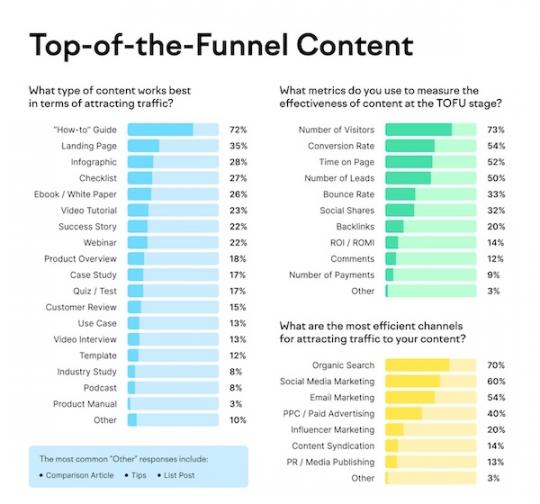
Image via Semrush
Ideally, you’ll need to offer different types of convincing materials and provide social proof to convince prospects to make a purchase decision.
These types of content work well at this stage:
- Detailed blog posts
- Product comparison guides
- FAQ content
- Case studies
- Whitepapers
- Ebooks
- Email newsletters
- Video tutorials
- Infographics
- Checklists
When writing any type of content, remember to analyze the top-performing content in the industry and set that as a benchmark to create unique content.
Webinars
Mastering how to build a marketing funnel involves using everything in your arsenal, including tools like webinars. By hosting a webinar, you can provide valuable information to your audience and establish yourself as an expert in your field.
Additionally, webinars are a great way to nurture leads and turn them into customers. According to a 2024 report, live webinars account for about 89% of leads generated, outpacing other options like direct signups.
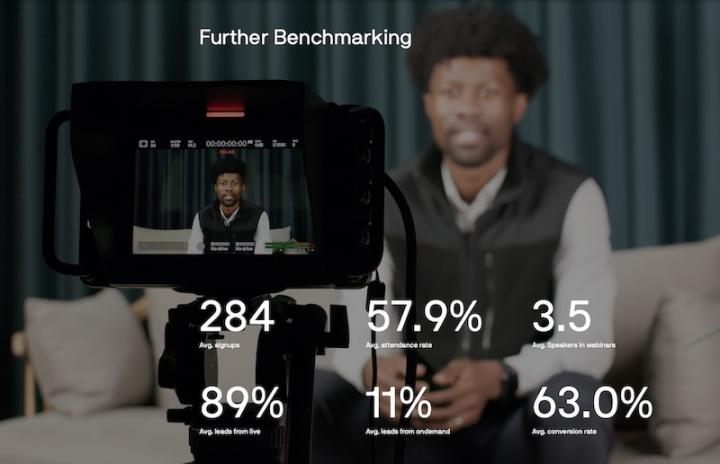
Image via Twenty-Three
Case Studies
Case studies are very effective in establishing credibility and converting leads into sales. We, at Attrock, have dedicated an entire section to case studies that showcase the real results we have achieved.
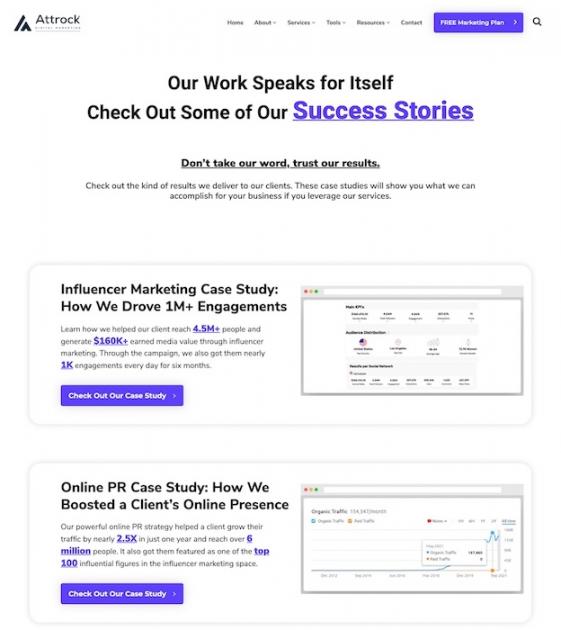
Image via Attrock
Write detailed case studies that include the problems, the solutions you offer, and the results. You can include case studies in your email marketing campaigns or share them on social media platforms such as LinkedIn.
Demonstration
Demos give your customers a closer look at your product or service and help them come to a decision.
This could involve setting up a booth at an industry event or creating a video demo that walks viewers through your product’s key features.
Ikea’s desk assembly video is a good example:

Image via YouTube
Free Samples
This marketing strategy typically involves providing access to your product or service for a limited time period so that potential buyers can experience its value first-hand.
Freebies can be a physical sample, a digital lead magnet, or a free consultation. Take a look at the free consultation offer from Blk Bld & Co.
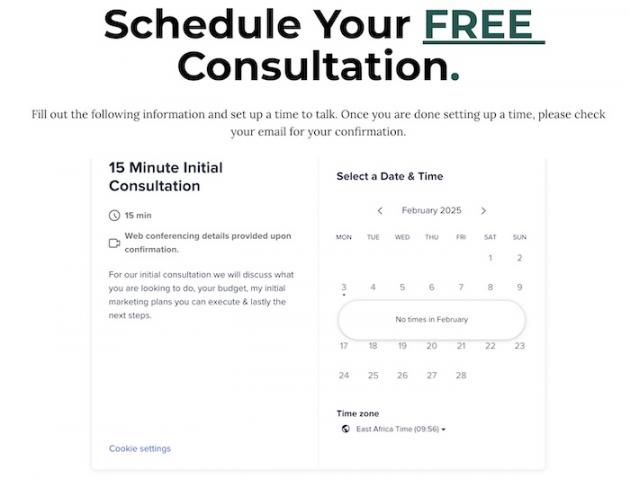
Image via Blk Bld & Co
To run a successful free sample campaign, start by identifying your target audience and determining what type of free sample would be most appealing to them.
Then, create an eye-catching campaign that will grab attention and incentivize people to take action.
Customer Testimonials
Reviews and testimonials are powerful marketing tools when learning how to build a marketing funnel. They show prospects that your product or service delivers on its promises. These are social proof aspects that can help persuade undecided customers to convert.
When selecting customer testimonials for your MOFU campaigns, look for ones that are:
- Specific and detailed about what your product or service did for the customer
- Written in the customer's own words
- From existing customers and influencers
Retargeting Ads
Some ideas for retargeting campaigns include:
- Creating ads specifically for users who have visited your pricing page but didn't convert
- Sending personalized ads to people who have engaged with your brand on social media
- Running ads featuring customer testimonials or case studies
Bottom of The Funnel (BOFU)
We have now reached the purchase stage, where customers are ready to buy your product or service.
Content Types to Use
Apart from email marketing, product overviews, and customer reviews, you can use in-depth blogs, case studies, customer testimonials, and product demonstrations. These are all excellent at motivating your prospects to take action at this stage.
Furthermore, you can:
Offer Discounts and Coupons
People love discounts. They can go from not planning to buy anything to grabbing something just because the discounts offered are too irresistible. Therefore, to ensure you retain your customers and win new ones, incorporate discounts and coupons whenever possible.
Provide Unambiguous Pricing Information
Now that you’ve convinced your prospects to buy from you, the next thing they’re going to do is to look for pricing information.
If they feel the price is too high or if you are not transparent about the pricing, they may decide to go to a competitor.
Ideally, you should offer flexible pricing that meets the unique needs of your customers.
4. Ensure You Have a Customer Retention Strategy
Learning how to build a marketing funnel isn’t just about converting prospects — you need to work hard on customer retention and make them your brand evangelists. Here are some tips on how to do just that:
- Keep your promises. If you say you're going to deliver something, make sure you do so — customers appreciate reliability, and that’s a crucial part of how to build a marketing funnel that retains customers.
- Go the extra mile. There's always room for improvement, so aim to exceed customer expectations whenever possible.
This could involve asking for feedback, responding to queries/complaints promptly, and offering bespoke solutions where appropriate.
- Keep things fresh. No one wants to engage with a dull, stagnant brand. Keeping your brand exciting is how to build a marketing funnel that works long-term.
- Regularly introduce new products/services, update your branding, and keep up with industry trends to ensure you're always ahead of the curve.
- Maintaining customer relationships is a vital part of how to build a marketing funnel. Stay connected with past customers through emails, social media, and exclusive offers to keep them engaged and encourage repeat business.
- Thank you notes
- Follow-up emails
- Coupons
- In-depth service or product advice
- Exclusive content
- Insider tips
Some types of content and tactics you can send at this stage:
- Leverage referral programs. Identify your loyal customers and encourage them to become brand advocates.
5. Track Performance with Marketing Funnel Metrics
The final step in building a marketing funnel is analyzing its effectiveness and tweaking it accordingly.
There are a lot of marketing funnel metrics that you could track, but which ones are most important? They include conversion rates, the number of leads and visitors, as well as the number of payments.
Conversion Rate
A conversion rate tells you how many people are taking the desired action out of the total number of people who visit your site or see your ad. You can find it by dividing the number of conversions by the number of visitors or clicks and multiplying that by 100.
If you're focused on how to build a marketing funnel that delivers results, this data is essential. It gives you a clear insight into whether your efforts are driving success or if adjustments are needed.
Conversion Rate By Channel
If your marketing goal is to know which channels to focus your efforts on, this metric is important.
You need to track the number of leads and conversions from different channels including:
- Paid ads on social media and search engines
- Email marketing
- Influencer marketing
- Referrals
- Organic search
Cost Per Acquisition (CPA)
This metric tells you how much it costs your business to acquire a new customer, and is a key factor in determining whether or not your marketing efforts are successful.
You can then track the number of leads by using metrics such as website traffic or newsletter signups, while sales can be tracked using revenue figures.
ROI
To calculate the ROI of a marketing campaign, you first need to identify the cost of the campaign. This includes both the money spent on the sales process (advertising and production) and indirect costs, such as staff time and overhead.
You can then track the number of leads by using metrics such as website traffic or newsletter signups, while sales can be tracked using revenue figures.
A simple formula to calculate ROI is to divide the total value of sales by the total cost of the campaign. This will give you a percentage figure that represents how much return they got for every dollar spent on the campaign.
For example, if a marketing campaign cost $100 and generated $500 in sales, then its ROI would be 500% ($500/$100).
What is a good ROI?
A ratio of 5:1 where you get $5 for every dollar you spend is generally taken as a good ROI.
Lifetime value (LTV)
This is the average amount of money that each customer spends on your brand over their lifetime. LTV is important because it allows you to calculate how much money you can afford to spend on acquiring new customers (acquisition costs).
Based on these insights, you can decide to tweak your marketing funnel to drive better results for your campaigns.
FAQ
Q1. What are the 5 stages of the marketing funnel?
A. The 5 stages of the marketing funnel are:
- Awareness: People can't buy from you if they don't know you exist. This stage is all about getting noticed.
- Interest: Now that people know about you, they need a reason to care. Give them useful content, helpful tips, or entertaining posts.
- Consideration: They’re thinking about buying but need a little push. Show reviews, case studies, or comparisons.
- Intent: They’re ready but need one last reason to choose you. Offer a discount, a free trial, or a bonus.
- Purchase: They buy. You celebrate. But don’t stop there. Keep them happy so they come back and tell their friends.
Q2. What are the 3 stages of a funnel?
A. The marketing funnel can also be divided into three stages:
- Top of the Funnel (TOFU) stage where your prospects become aware of your brand and what you have to offer.
- The Middle of the Funnel (MOFU) stage where they start to learn more about what you have to offer and develop an interest in it.
- The Bottom of the Funnel (BOFU) where they decide to purchase your product or service.
Q3. How does funnel marketing work?
A. Funnel marketing guides people from discovering a business to becoming customers. It works step by step.
First, potential customers notice a product or service, often through ads, social media, or word of mouth. Next, their interest grows as they visit a website, read reviews, or sign up for emails.
Then, they consider making a purchase, comparing prices, checking out deals, or evaluating options. If it meets their needs, they make the purchase. Afterward, they may return for more or recommend your product to others.
Q4. What is a marketing funnel example?
A. A successful marketing funnel starts with generating awareness through traffic sources like Google ads or blogs.
Once someone clicks on your ad or links, they are then sent to a landing page where they can learn more about your product or service. If they are interested, they will then be sent to a sales page to make a purchase.
Q5. How do you build a marketing funnel?
A. To build a marketing funnel that converts, you need to start by identifying your goals and ideal customer.
The next step is to use marketing tactics and content to create brand awareness, generate interest, and entice them to purchase.
Go through this blog post on ‘how to build a marketing funnel’ to know the steps to take.
Q6: How do you create a sales funnel for beginners?
A. Creating a sales funnel for beginners doesn’t have to be complicated. First, think about attracting the right people. Then, get them interested in what you’re offering. You now have to build trust by offering more helpful content. The next step is now making a sale and then engaging them with follow-up emails, surveys, or offering more products.
Q7. How do I create a marketing funnel from scratch?
A. To learn how to build a marketing funnel from scratch, try the following steps.
- Determine your goals
- Generate buyer personas
- Leverage the right marketing campaigns
- Ensure you have a customer retention strategy
- Track performance with marketing funnel metrics
Keep It Going
As you can see from our detailed breakdown, knowing how to build a marketing funnel is crucial. A marketing funnel can help you increase your conversion rate and grow your business.
By building a well-designed funnel, you can nurture leads and guide them through the buyer's journey until they're ready to make a purchase.
Remember to track the right sales metrics and adjust your tactics accordingly on an ongoing basis. That is the most effective way of ensuring that your marketing funnel delivers the conversion rates you’re aiming for.





